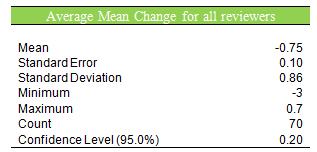In all cosmetic practices there is a demand for non-surgical skin tightening, especially in areas where visible scarring could result, e.g. face or neck lift. There are many devices on the market for non-surgical skin tightening. All have similar principals: heating of the subdermal layers without overheating the epidermis to induce skin contracture. In the most basic terms, the major drawback has been temperature control and depth of treatment. How hot does the epidermis, dermis and or sub-dermal tissue become and can it be achieved safely?
Skin Tightening
Thermistor-controlled subdermal skin tightening (ThermiRF) acts is inserted into the percutaneous space and heats the tissue through radio frequency. The temperature of the hand piece is self-regulated, heating the surrounding tissue to the desired temperature (usually 55-65°C). At the same time, the epidermis is monitored via a real time infrared camera (40-43°C). This can be done in the office setting with local anesthesia, with or without liposuction. The procedure takes less than an hour and is well tolerated.
For appropriate tissue tightening, superficial subdermal heating as well as deep adipose and subcutaneous tissue are required. Paul et al. (2011) described tissue contracture as a result of treating subcutaneous collagenous tissue, rather than dermal collagen only
ThermiRF Clinical Study
A recent clinical study evaluated the clinical utility of ThermiRF for the treatment of submental skin laxity. Blinded reviewers were asked to score random subject images using a validated 4.0 skin laxity scale.
Reviewers reported a statistically significant reduction in the skin laxity severity for post-operative images. The average change, based on the 4.0 skin laxity scale, was -0.75 (Table 1).
Of the study population, 72.4% of subjects demonstrated a clinical improvement in skin laxity. Forty-six percent of subjects reported an improvement of one grade or more. The histogram below shows the distribution of the reported mean change in skin laxity scores for the study entire population (Figure 2):
Comparing the mean differences for the independent samples, a difference of -0.74 was reported, which was statistically significant (p<0.0001).
ThermiRF – Non-Surgical Neck Rejuvenation Before and After Photos
Figure 1: Baseline and 50 day post-procedure images of a 42-year-old female underwent ThermiRF combined with subcutaneous aspiration of 0.5 ml.
Figure 2: Baseline and 60 day post-procedure images of a 55-year-old female undergoing ThermiRF with 14.0 ml of subcutaneous aspiration.
Figure 3: Baseline and 50 day post-procedure images of a 79-year-old female that underwent ThermiRF without aspiration
The concept of skin tightening through thermogenesis is not a new concept, but has been here-to-fore difficult to safely apply clinically. ThermiRF is an excellent option to deliver controlled and precise epidermal and subdermal thermogenesis for safe 3-dimensional submental tightening for the right patient.
ThermiRF – Non-Surgical Neck Rejuvenation is now offered by Dr. Brad Hubbard
For more information on plastic surgery procedures and treatments performed by Plastic Surgeon, Bradley A. Hubbard MD in Dallas, Plano, Frisco and surrounding areas schedule a consultation by clicking here or calling 214-370-4813
1.) Source: Paul M, Blugerman G, Kreindel M, Mulloholland RS. Three-dimensional radiofrequency tissue tightening: a proposed mechanism and applications for body contouring. Aesthetic Plast Surg. 2011;35(1):87-85.








